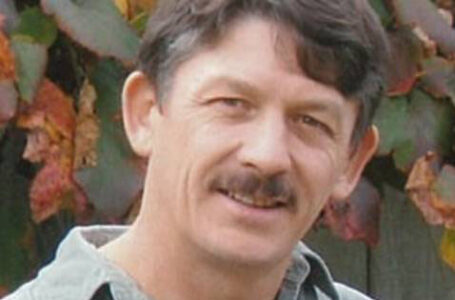
June 2024 will mark the 20th anniversary of the disappearance of east Auckland man Jim Donnelly.
The Times is looking back, through a series of stories, at one of the most baffling unsolved cases in recent New Zealand history.
The 43-year-old father-of-two was living with his wife Tracey Donnelly and their two young children in Dannemora when he disappeared on Monday, June 21, 2004.
Coroner Sam Herdson held an inquest hearing on the matter in Auckland in 2007.
Her subsequent report states when Donnelly vanished he’d been working at Glenbrook Steel Mill in Waiuku, South Auckland, in a supervisory engineering role for 19 years.
Despite extensive searches at the mill and surrounding area, and an in-depth investigation, the coroner found what happened to him remains unexplained but “the presumption is Jim has died”.
There’s no playbook, manual, or script to help someone cope with and recover from what Tracey Donnelly and her children have experienced.
One day in 2004 her husband, Jim Donnelly, went to work and never came home. There’s been no known sighting of him since.
When it comes to her husband’s disappearance, Tracey’s thoughts are stuck in a never-ending loop as she tries to process it.
“It’s just constant,” she told the Times. “It’s probably not as much as it was in the beginning but it’s still there every day.
“I’m doing better than I was. I’m still working on it because it keeps going round in my head.
“It’s kind of like a loop, because it’s like, ‘what have I missed?’
“It just keeps going round and round and round and I’ve got to work out a way to stop it.”
In her mind, Jim is still 42 years old. He never ages.
In the early days after he vanished Tracey was resistant to having counselling as she couldn’t see what benefit there was to it, but her view has since changed.
She had counselling through her job and took her children to Seasons For Growth, an education programme in Howick that helps young people deal with grief and loss.
“They really got something out of that and so I did it,” she says.
“It was very good. I felt a change at the end of it, just being with people who were in that process.
“That was in the very beginning and that helped. Along the way you pick up people who can help with the different parts of things.
“As time has gone on and with more I’ve read and the more information that’s out there, I see how it all kind of works.
“So I am working through things and accepting that I do need help. I know I’m wound up in all of this and it’s like a maelstrom and I can’t get out of it.”

Tracey says prior to Jim’s disappearance they were “just the average family” and it was impossible to foresee what happened to him.
Her husband was an extremely honest man who loved his family and would never have wanted to be without his children, she says.
“That’s why I don’t have anything I can say, ‘it’s because of this’ or ‘because of that’.
“I think, ‘what have I missed, was there anything that I should have picked up on?’
“Because we don’t have any information since the day he went missing.
“I’m trying to make sense of everything but there’s nothing to make sense of.”
For the first two to three years following Jim’s disappearance, Tracey was focused on surviving.
“As the years go on you do find yourself again but you’re never the same person you were before. I’m kind of at peace with that.”
When she realised Jim hadn’t come home as expected and his whereabouts were unknown, one of his friends phoned her and said she needed to take Jim’s passport to the Papakura police station to formally report him missing.
She was in shock in the immediate aftermath and doesn’t remember how she got her two children up each morning and off to school.
She knows they went to school because they weren’t with her, she says.
Tracey says she didn’t tell their children their father was missing for at least a week in case he was found.
“They just went to school. I think I was living at my parents’ house for that week but I can’t really remember.
“That first week I spent down at the mill, just down at their offices and talking to people.
“Things started coming out in the media the following week because in that first week nothing was said.
“The wider public wasn’t advised there was a missing person at the mill until a week later.
“By that stage I was back at home. I was in between home and here [her parents’ house].
“There were a lot of media people turning up and I just couldn’t deal with anything. I wanted to hide.”
When Tracey visited the mill she didn’t get a sense either that Jim was still there or that he was gone.
“I was totally confused. My thoughts were they’d find him and he’d just had an accident.
“I couldn’t understand why they couldn’t find him. I was hoping he’d turn up somewhere and he’d maybe had a breakdown.
“I discussed that with my counsellor, that he’d had a breakdown and took off somewhere and she said he would have been seen because he wouldn’t have been acting normally in the community.
“I just didn’t know where anything would appear from next. For quite some time you’re hoping he’s going to turn up but it didn’t happen.”
Someone who’s been through what she has doesn’t go back to normal, Tracey says.
“You just basically end up dealing with what you’ve got. I was in full-time employment before.
“I ended up going back part-time and went back to full-time employment several years ago.
“Your priorities change. I was basically making sure the children were okay and I was there for them before and after school.
“But you’re hyper-vigilant. That’s the other thing I need to dial down.
“I’m still hyper-vigilant and I always see the worst that could happen. That’s quite normal too.”
- The next and final story in this series details Tracey’s view about the evidence surrounding Jim’s disappearance.











